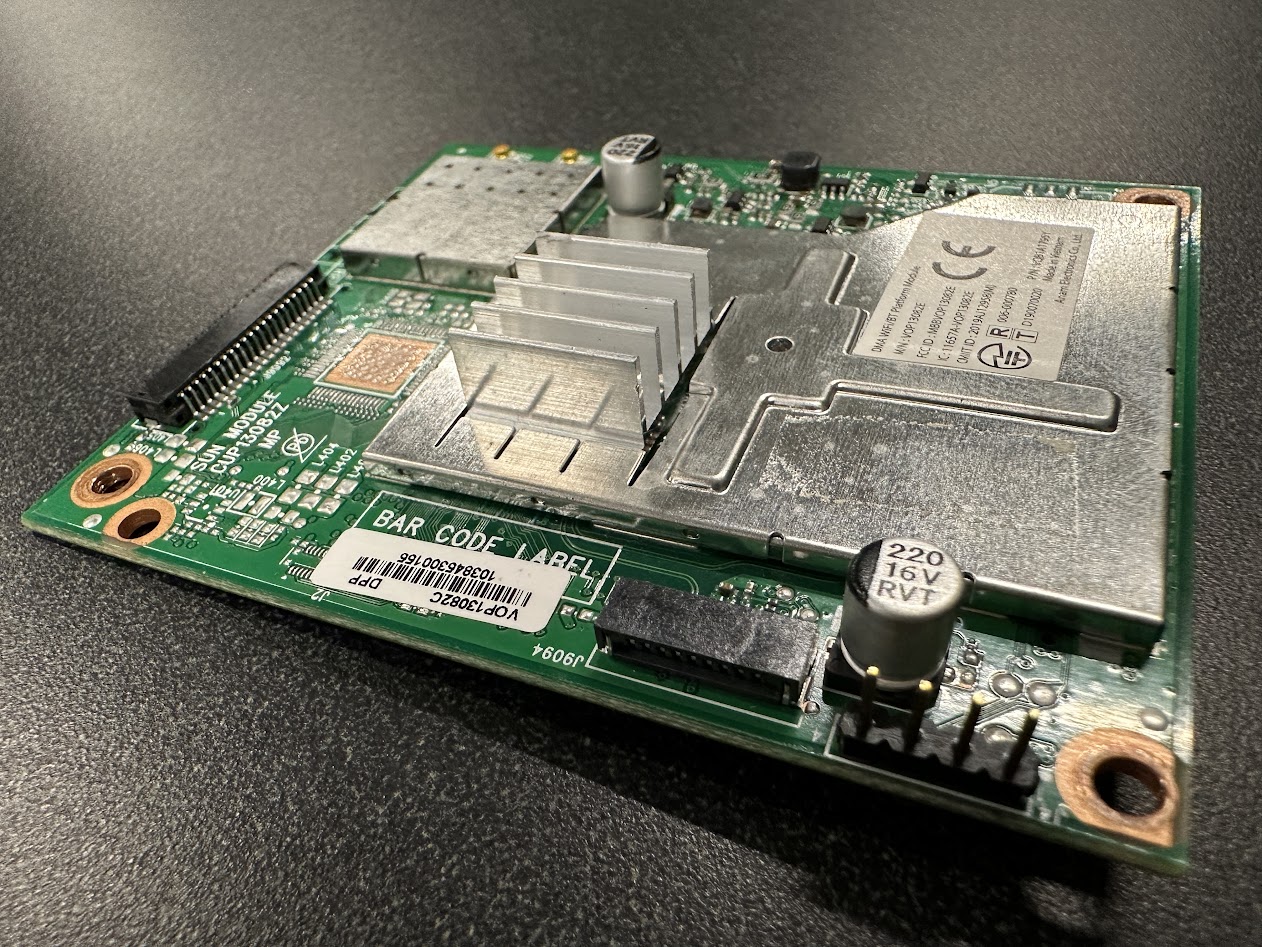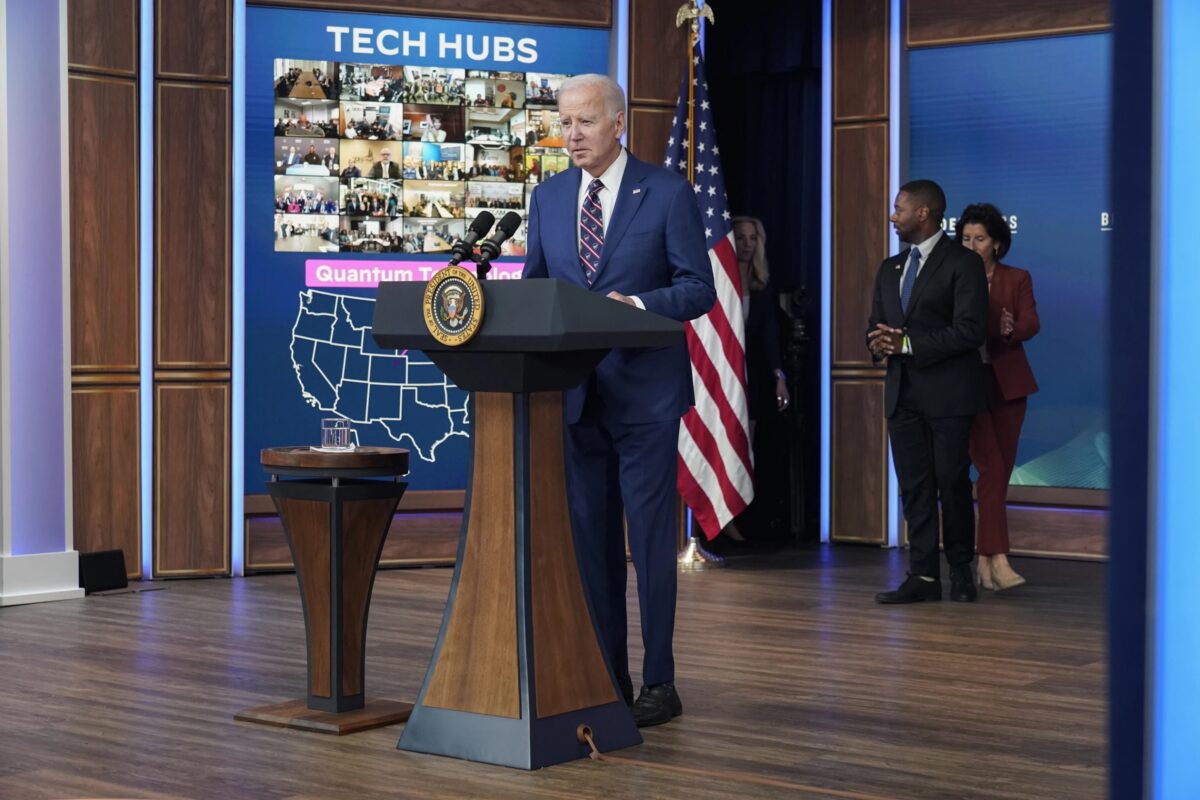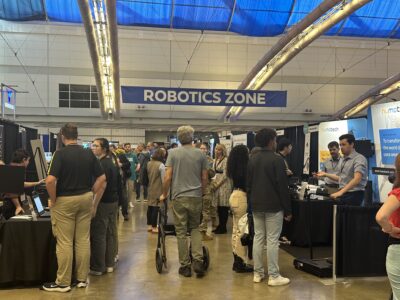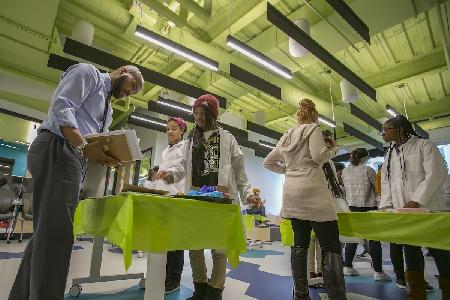The US government is investing half a billion dollars into emerging technologies developed in places not widely known for innovation.
That might sound like a lot until you consider how ambitious the projects’ goals are.
Rob Simpson expects 1 in every 4 U.S.-made semiconductor chips to be manufactured within a 350-mile radius of his upstate New York office. Jennifer Hankins plans to put 56,000 more Tulsans in jobs working on autonomous systems in Oklahoma. Andrew Kossack intends that by the early 2030s, biomanufacturing will be centered in Indiana.
Simpson, Hankins and Kossack lead three of the 12 regional coalitions awarded a cumulative $504 million from the ambitious U.S. Economic Development Administration (EDA) Tech Hubs program.
Now comes the hard part: Delivering on ambitious goals backed by taxpayer funds, and making sure anyone knows about it.
“This is a chance to be globally competitive,” said Hankins, who leads Tulsa Innovation Labs, one in a suite of organizations charged with reimagining Oklahoma’s economy. That group is being awarded $51 million toward its Tulsa Hub for Equitable and Trustworthy Autonomy Tech Hub.
“We can all stop battling someone down the turnpike or another state,” she said. “This is now a global race. Every place has a significant stake in that race.”
The funds are the first — and depending on the outcome of November’s presidential election, perhaps the only — funding stage of the Tech Hubs program, a component of the CHIPS and Science Act, part of President Biden’s seismic multi-trillion-dollar federal spending splurge.
But getting the word out about these programs is easier said than done. Each funded hub has local dreams and national demands. We’ve been here before.
Back in 2013, a Senate subcommittee published a blistering retort taking on a different, Obama-era federal program to incentivize advanced industry development.
Of a coalition to combat climate change, led by a group of Pennsylvania institutions, the Appropriations subcommittee authors wrote: “The Hub was more focused on the economic development of the Philadelphia area rather than developing a national program to improve the energy efficiency of commercial and residential buildings across the United States.”
Rather than a slight against Philadelphia, this represents a general fear of big sums of federal dollars directed toward commercializing technologies in places not already known for doing so. (The Philadelphia Navy Yard, where that energy-efficiency hub was located, did develop over the last decade.)
A new coalition from that region put together a fresh bid focused on precision medicine for this more recent Tech Hubs program, proposing a far broader coalition across workforce and entrepreneurship efforts.
Out of 300 bids, Philly did join 30 other regions in receiving the coveted ‘Tech Hub’ designation from the EDA. But like neighboring Baltimore, it was not given one of the first dozen implementation grants.
Takeaways for funded EDA Tech Hubs going forward
The lessons on balancing national outcomes with local impact are worth considering for the dozen awarded funds. I pushed each of the three leaders I talked to on the risk.
Hankins of Tulsa Innovation Labs argues that to reach industry goals, you need people goals.
“Industry is cultural,” Hankins of Tulsa Innovation Labs told me. “What you build is reflected in your people.”
“Industry is cultural. What you build is reflected in your people.”
Jennifer Hankins, Tulsa Innovation Labs
Hankins is shepherding $51 million to make Tulsa “a global leader” in “commercializing autonomous systems for use cases ranging from agriculture and pipeline inspections.” Or, as Hankins puts it smoothly in her bid’s metaphor-rich marketing language, they’re creating “a new shore” in the “clear blue skies at the rural-urban divide” of Oklahoma.
As wide-ranging as Tulsa’s bid may seem — luring entrepreneurs working on automation for planes, poultry and petroleum — it, like most of the funded programs, includes a hefty focus on workforce development. It specifically emphasizes with an emphasis on racial and gender inclusion.
Hankins boasted they’re “building a federated data system” that will help her group track the connections between their primary, secondary and higher education systems. If kids are falling behind in a critical skill, how can they correct this to shape their future workforce? Far-reaching indeed.
Simpson’s CenterState CEO bid, dubbed NY SMART I-Corridor Tech Hub and awarded $40 million, is ambitious in its own right. It’s the only Tech Hubs bid that won implementation for a semiconductor manufacturing, perhaps the most contested bit of technology infrastructure in the world.

Once an American-made innovation, advanced semiconductor manufacturing went abroad, like quantum computing, since concentrating in geographies with fraught political dynamics.
Ninety percent of all advanced semiconductor manufacturing happens on the island of Taiwan, Simpson said, which is just 68 miles off the shore of China – whose leaders have a tense relationship with American elected officials.
“There is a significant economic and national security imperative to bring this industry back to the United States,” Simpson told me. “This is our chance to reclaim some of our hard-earned invention heritage and put Americans back to work.”
Meanwhile, central Indiana’s $51 million Heartland BioWorks bid led by Kossack’s Applied Research Institute where he is a vice president, is likewise multifaceted.
“Our bid focuses on investing in the workforce pipeline and supporting small, emerging, and scaling-up entrepreneur groups in the biotech sector,” Kossack said. “We hope [central Indiana will] become less hidden in the years to come.”
How many big goals are too many for one project?
The challenge with projects that have so many priorities isn’t just that it’s difficult to fulfill them. By definition, not all goals can be the top goal — and it’s unlikely everyone involved in a coalition will agree on that priority list.
Some of the tensions at play:
- Does representation in local workforce programs matter more or less than what technology is built?
- Does producing the technology within American borders matter more or less than the quality or production cost of the technology?
- Does carbon reduction matter more or less than keeping a wide local coalition engaged?
There are answers to these questions, but it’s uncomfortable and politically difficult to speak about them publicly.
After talking with representatives from nearly 10 of the Tech Hub bids, including those that were funded, I don’t doubt project bidders take the responsibility of their pitches seriously. What will be prioritized first, however, and how more Americans can track their progress, is not yet determined.
The most convincing change between the big federal economic development of the past and this Tech Hubs program is the focus on existing regional strengths. Or as Hankins put it, “super-charging our assets.”
In this way, the federal government isn’t trying to create a new industry in a new place, defenders argue. Instead, the feds are putting their thumb on the scale to overcome what could be market failures. It is in the national interest to house critical industries and all benefit if we overcome historic inequalities to boost workforce participation.
This is why the outcome of November’s election will determine what happens next for the program.
No one fears a clawback of these already awarded implementation grants, but the other dozen designated hubs not awarded funding are waiting. Neither Kamala Harris nor Donald Trump have weighed in directly on this program.
Another half billion dollars in Tech Hubs funding, and much more within the CHIPS and Science Act, may be on the line. Like upstate New York, Oklahoma and Indiana, other coalitions have programs with big goals to advance technologies, contribute to American economic leadership and reduce inequality.
“These are generational investments,” Hankins said, which is both plausible and worrying for any budget-conscious civil servant. “This industry will be the conduit to … systematic change in that region. We’re building a tech jobs community in a new way.”
Before you go...
Please consider supporting Technical.ly to keep our independent journalism strong. Unlike most business-focused media outlets, we don’t have a paywall. Instead, we count on your personal and organizational support.
3 ways to support our work:- Contribute to the Journalism Fund. Charitable giving ensures our information remains free and accessible for residents to discover workforce programs and entrepreneurship pathways. This includes philanthropic grants and individual tax-deductible donations from readers like you.
- Use our Preferred Partners. Our directory of vetted providers offers high-quality recommendations for services our readers need, and each referral supports our journalism.
- Use our services. If you need entrepreneurs and tech leaders to buy your services, are seeking technologists to hire or want more professionals to know about your ecosystem, Technical.ly has the biggest and most engaged audience in the mid-Atlantic. We help companies tell their stories and answer big questions to meet and serve our community.
Join our growing Slack community
Join 5,000 tech professionals and entrepreneurs in our community Slack today!







